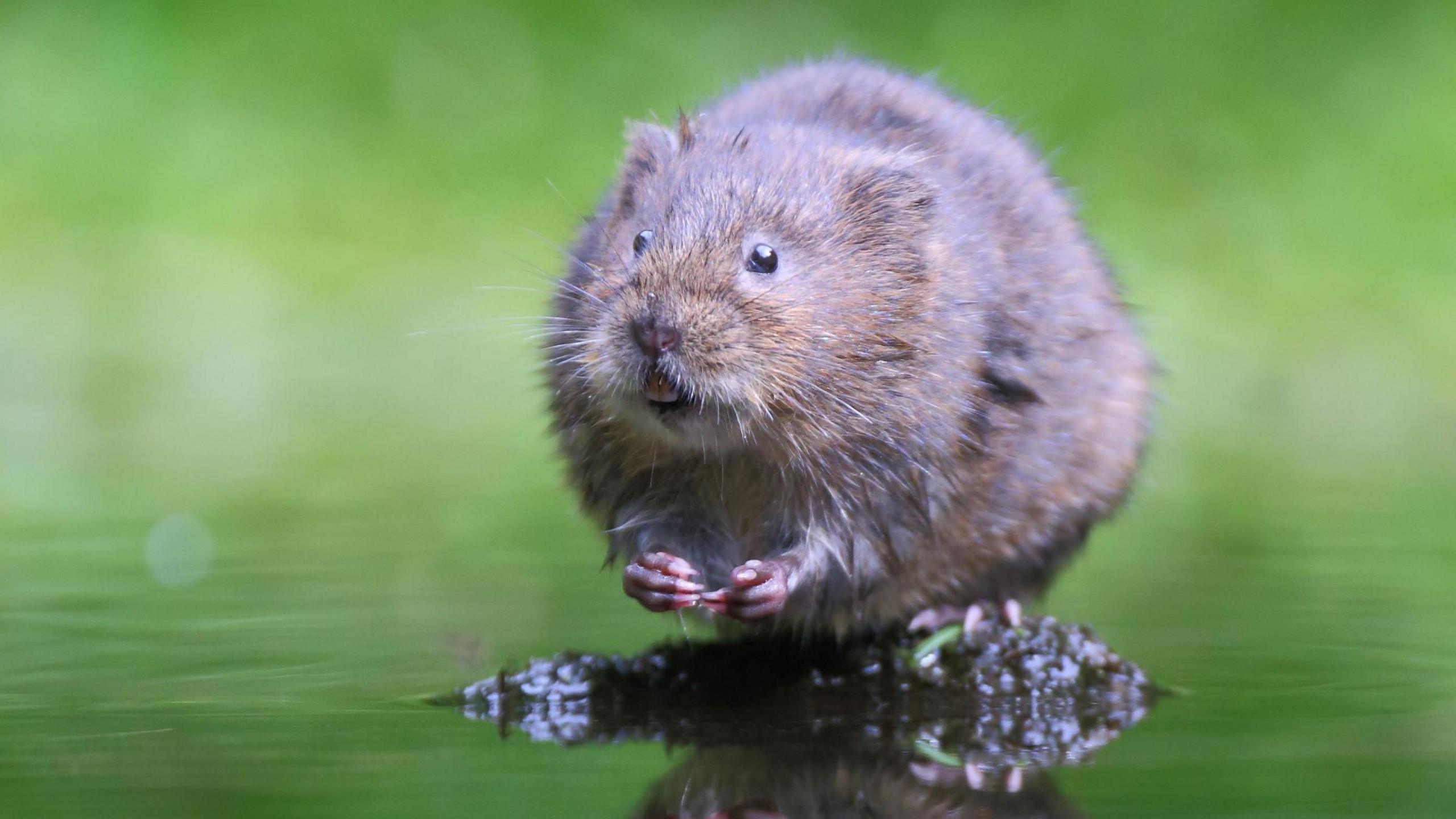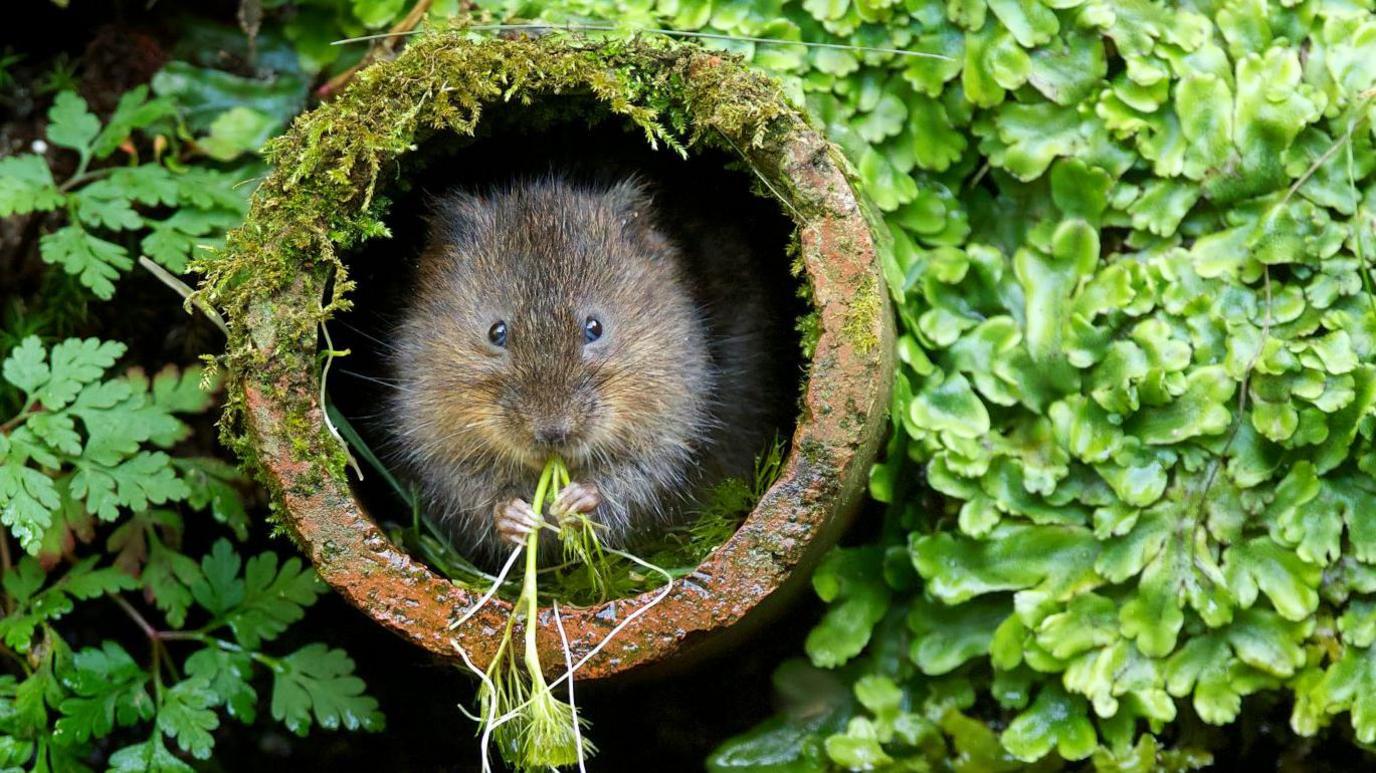Hopes for water voles as new colonies discovered

There are new hopes to save the UK's fastest declining mammal species from extinction
- Published
New colonies of the UK's fastest declining mammal species have been discovered in the uplands of south Wales.
Usually found across riverbanks in Wales, water voles have now taken up habitat in the valleys, which could help prevent their local extinction.
Robert Parry, chief executive of the Initiative for Nature Conservation Cymru (INCC), described the discovery as "huge".
Speaking to BBC Radio Wales Breakfast, he said: "We didn't know they were up there, they're on the verge of extinction, we've been looking for them for decades."
Water voles brought back to the Lake District
- Published17 August 2023
New hope for rare rodent after forest find
- Published15 November 2024
Rare butterfly species reintroduced to Wales
- Published16 June 2024
Discovered in the upland landscape of the Rhondda and Afan valleys in south Wales, upland habitats are now one of the most significant places in Wales for the small mammal, according to INCC.
The project, led by the INCC and funded by the Pen y Cymoedd Community Fund, surveyed numerous ditches, marshes, and peat bogs of the uplands from May 2024 and have so far found 20 new water vole colonies.
Also known as the water rat, the semi-aquatic rodents were once a common sight in Wales, but have declined due to habitat loss and predation by the non-native American mink.
The mink could wipe out entire colonies within a few days - but they tend to avoid upland areas, providing safer habitats for water voles.
Conservationists say numbers of water voles have declined by 90% in the past 30 years.

The water vole colonies were found in the upland landscape of the Rhondda and Afan Valleys
INCC's conservation officer, Eliza Chapman, said she hoped the work would prevent local extinction of water voles as they expand their range across the uplands.
More than 40 water vole colonies have now been recorded in the past few years, according to INCC, and they play a vital role in maintaining the balance and health of upland ecosystems.